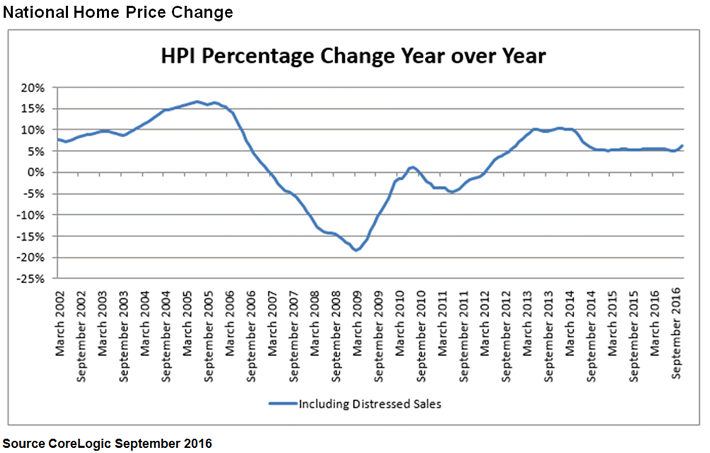The first of the September home price indices came out on Tuesday, and the CoreLogic Home Price Index (HPI) showed price gains, while not slowing, are demonstrating a lot of stability. CoreLogic's HPI is based on nationwide prices including those for distressed sales.
The HPI increased from its August level by 1.1 percent, marking the fourth consecutive month with this same rate of appreciation. On a year-over-year basis the index rose 6.3 percent compared to an increase of 6.2 percent from August 2015 to August 2016. It was the largest annual increase since March when prices rose 6.7 percent.

Once again the greatest state level gains were in Washington (10.3 percent) and Oregon (10.1 percent). The two have been swapping first and second place for months. Colorado, also a perennial in the top five, gained 8.6 percent followed by Utah and Idaho at 7.8 and 7.7 percent respectively.
"Home-equity wealth has doubled during the last five years to $13 trillion, largely because of the recovery in home prices," said Dr. Frank Nothaft, chief economist for CoreLogic. "Nationwide during the past year, the average gain in housing wealth was about $11,000 per homeowner, but with wide geographic variation."
"Home-price growth creates wealth for owners with home equity," said Anand Nallathambi, president and CEO of CoreLogic. "A 5 percent rise in home values over the next year would create another $1 trillion in home-equity wealth for homeowners."
The CoreLogic HPI Forecast has predicted month-over-month changes ranging from 0.4 percent to 0.9 percent since the first of the year while the actual number has never come in below 1.1 percent. This month they are forecasting an 0.3 percent increase from September to October. From September 2016 to September 2017 the company's economists expect prices to rise by 5.2 percent.
The CoreLogic HPI Forecast is a projection of home prices using the CoreLogic HPI and other economic variables. Values are derived from state-level forecasts by weighting indices according to the number of owner-occupied households for each state.







